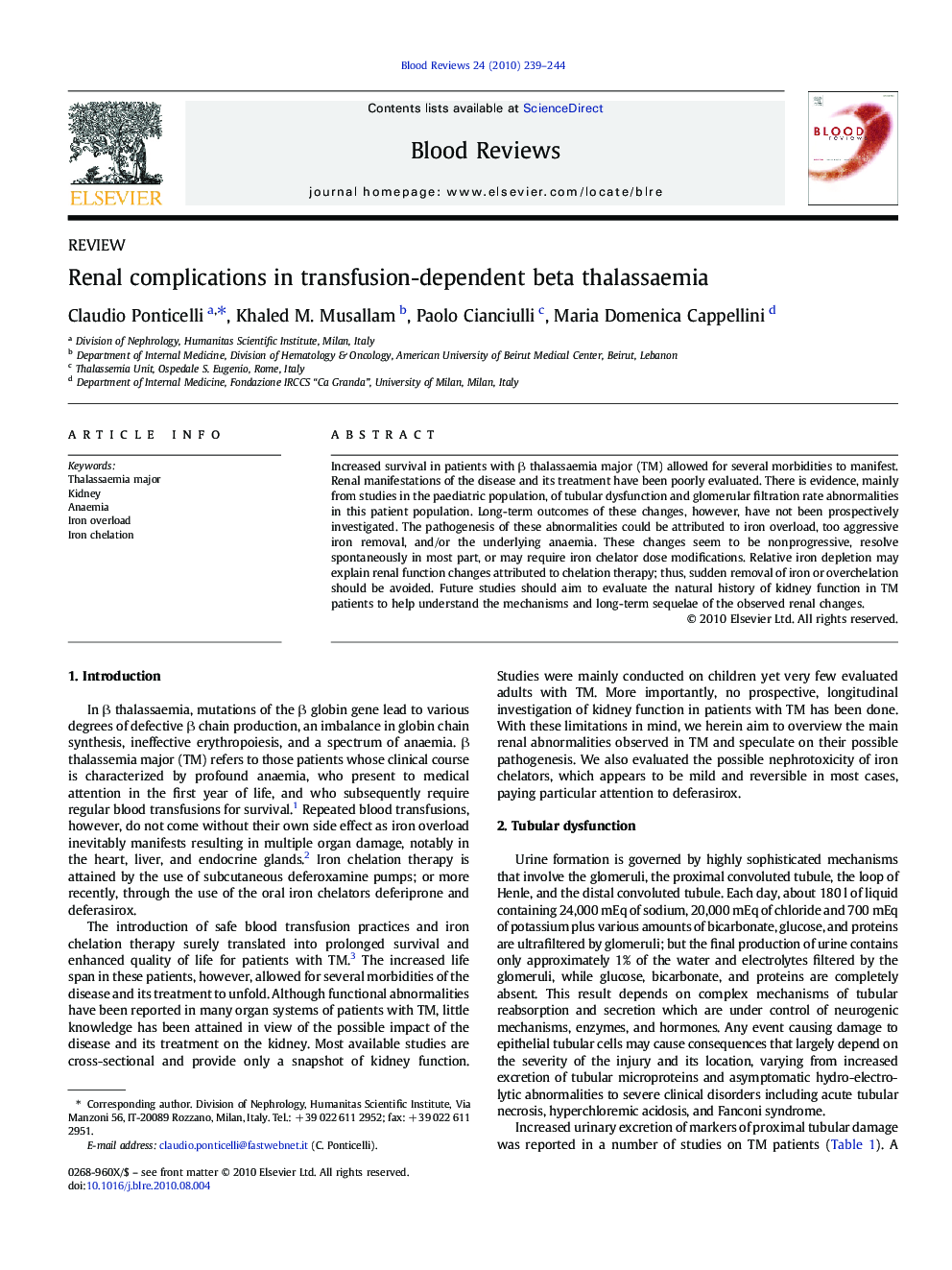| Article ID | Journal | Published Year | Pages | File Type |
|---|---|---|---|---|
| 2106603 | Blood Reviews | 2010 | 6 Pages |
Increased survival in patients with β thalassaemia major (TM) allowed for several morbidities to manifest. Renal manifestations of the disease and its treatment have been poorly evaluated. There is evidence, mainly from studies in the paediatric population, of tubular dysfunction and glomerular filtration rate abnormalities in this patient population. Long-term outcomes of these changes, however, have not been prospectively investigated. The pathogenesis of these abnormalities could be attributed to iron overload, too aggressive iron removal, and/or the underlying anaemia. These changes seem to be nonprogressive, resolve spontaneously in most part, or may require iron chelator dose modifications. Relative iron depletion may explain renal function changes attributed to chelation therapy; thus, sudden removal of iron or overchelation should be avoided. Future studies should aim to evaluate the natural history of kidney function in TM patients to help understand the mechanisms and long-term sequelae of the observed renal changes.
